Siberian cats are lovable and loyal family companions who get along well with children and other pets. Learn more about this rugged Russian cat breed.
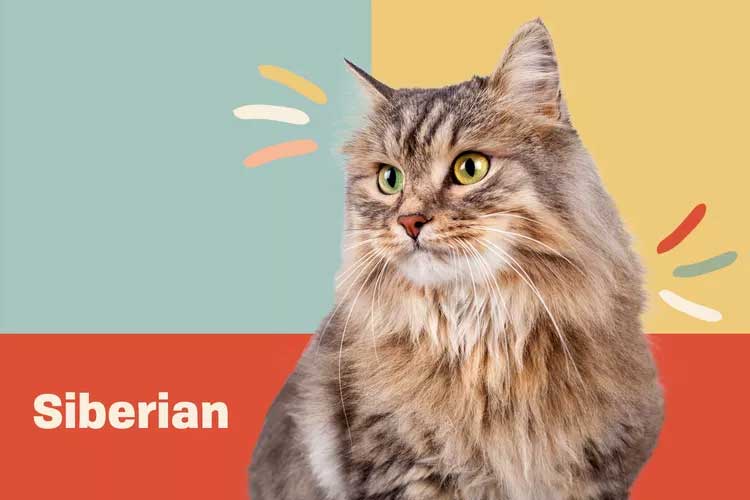
Siberian Overview
| OFFICIAL NAME | Siberian |
| COMMON NAME | Siberian |
| PET HEIGHT | 10 to 12 inches |
| PET WEIGHT | 12 to 15 pounds |
| LIFESPAN | 8 to 10 years |
| GOOD WITH | cats, children, dogs, families, seniors |
| TEMPERAMENT | affectionate, bold, sociable |
| INTELLIGENCE | high |
| SHEDDING AMOUNT | seasonal |
| PLAYFULNESS | high |
| ENERGY LEVEL | active |
| VOCAL LEVEL | quiet |
| COAT LENGTH | long |
| COLORS | black / ebony, blue / gray, chocolate / brown / sable, cinnamon, cream / beige / tan, fawn, lavender / silver, lilac, red / orange, white |
| OTHER TRAITS | easy to train, friendly toward humans, friendly toward other pets, friendly toward strangers, good lap cat, high prey drive, hypoallergenic, requires lots of grooming, strong loyalty tendencies, tolerates being picked up |
Siberian cats are (as their name suggests) native to Siberia, a region of Russia known for long, harsh winters. Their rugged origins are reflected in their long, weatherproof triple coat and strong bodies.
These alert and solidly built cats are somewhat kittenish in personality. This breed is sweet-natured and loves to cuddle. Siberians are totally devoted to their pet parents and generally get along well with children and other pets.
Siberian kittens typically cost between $1,200 and $4,000, depending on pedigree and age. Why the high price tag? This breed is expensive due to their high demand and the relatively low number of purebred Siberian cats outside of Russia—so they're pretty rare in the U.S.
Appearance
These medium-sized cats were certainly built for their environment in the forests of icy Siberia. Siberian cats have long, triple-layered, water-resistant coats and sturdy, muscular bodies that seem heavy compared to their size.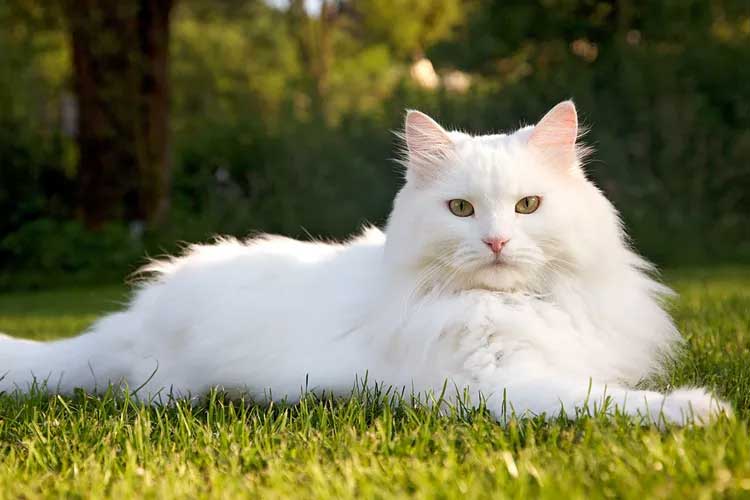
Their thick coat of long hair comes in any color including solid white, black, red, blue, and silver. They also come in a wide variety of patterns including smoke, point, calico, tabby, tortoiseshell, and bi-color. Siberian cats typically have golden, green, or copper eyes, though white Siberian cats may have blue eyes.
With all of that hair, it's unsurprising these cats do a lot of shedding. Twice a year Siberian cats actually molt: In the spring, this breed sheds their longer, warmer winter coat, and in the fall they shed a shorter summer coat.
Despite all of that shedding, Siberian cats are actually considered "hypoallergenic" because their skin produces less of the chemical associated with cat allergies (Fel-d1), according to The Siberian Cat Club (SCC). However, there's no such thing as a truly hypoallergenic pet, and Kirsten Kranz, director of Specialty Purebred Cat Rescue, says it's important to know that these cats aren't conducive to everyone with allergies.
"Though some people do find relief from cat allergies with this breed, every year we get Siberians [at the shelter] from people who are unable to tolerate them because of their own allergies," she says. "Allergies are very different from person to person and these cats are no panacea."
If you're considering bringing home a Siberian kitten, spend time with the breed first to see how your allergies handle them.
Temperament
Siberian cats are super affectionate and have playful personalities. These cats mature very slowly, both physically and emotionally. It can take the Siberian as long as five years to reach adulthood, which means they spend a significant portion of their life acting like kittens.Despite their youthful attitudes, Siberian cats are typically pretty mellow and quiet. When they do make noise, it will likely be a little purr or chirp to express some affection to their favorite people. Speaking of favorite people: The Siberian loves pretty much everyone. You can count on this family pet to get along with children and other animals.
"They are generally nice cats and their personalities range across the board," Kranz says. "Since they are a more rare breed, we only see maybe a couple a year and they are sweet-natured cats. You can expect them to be moderately active, gentle cats with personalities much like any domestics."

These cats love adventure and a challenge. They're also excellent mousers who love to prowl the premises for pesky rodents. When they're not playing and hunting, these cuddly lap cats love snuggling and spending one-on-one time with their people.
Living Needs
Siberian cats are super social animals who adore their humans and generally don't like being left alone too long. These pets are best fit for a home where humans are usually around and willing to engage in play. The Siberian gets along with nearly everyone, and is a great fit for homes with children and other pets.These intelligent cats love a challenge, so their living environment should offer them toys and people to keep these fluffy cats active and entertained. When Siberian cats aren't playing and goofing around, they're more than happy to crawl up in your lap and relax for a while.
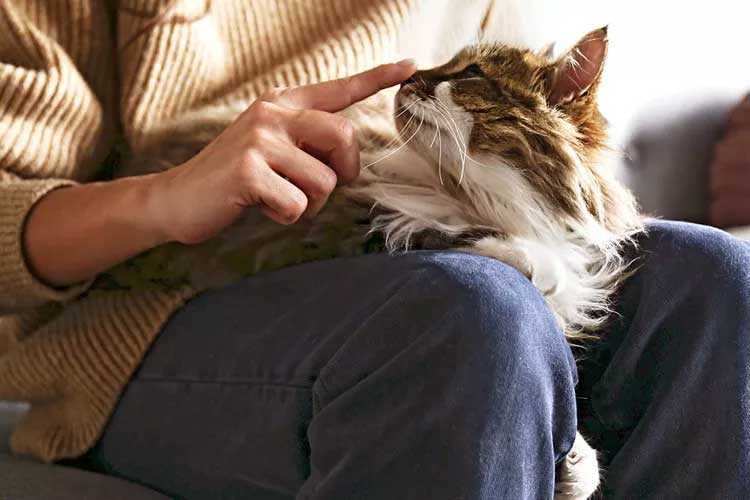
These rugged cats were built for the outdoors and retain some of those qualities. For instance, many Siberian cats love water—so don't be surprised if your cat follows you into the shower or bath to play! He'll also love exploring the world on a harness or lounging in the sun from his catio.
Care
"Siberians need to be brushed at least three times per week to prevent a matted coat," says Natalie L. Marks, DVM, CVJ, Blum Animal Hospital, Chicago, Ill. "They rarely need bathing because they have a triple coat that's water-resistant."Aside from regular brushing, be sure to trim your Siberian's nails regularly. You should also regularly clean his ears and eyes.
Keeping his body moving and mind engaged is just as essential as brushing, too. Leaving out toys, providing them with a cat tree, and offering lots of one-on-one play is a great way to get these cats moving and thinking.
"They are very athletic and need both physical and mental exercise," Marks says.
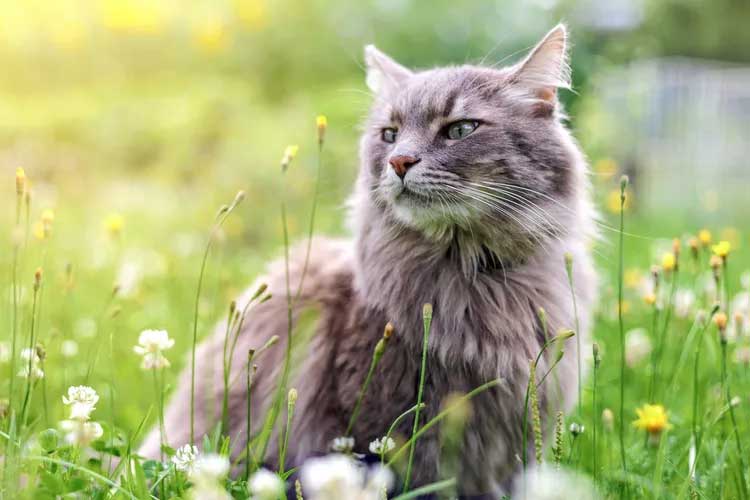
Siberian cats are incredibly smart and easily trained to use a scratching post and litter box. Because these cats are somewhat on the larger end of medium-sized, make sure their litter box is big enough for them to comfortably do their business. You can even train your Siberian to do a trick or two!
Socializing these animals is fairly easy, thanks to their loving personalities. Again, Siberian cats get along well with children, other cats, and dogs.
Feed your Siberian high-quality cat food and monitor his food intake to help prevent overeating. Check in with your veterinarian to know how much and how often to feed your individual cat.
Health
Siberian cats have a lifespan of 8–10 years and they are typically healthy pets."The biggest genetic risk with this breed is a slightly higher risk of hypertrophic cardiomyopathy, otherwise known as HCM," Marks says. "This is a condition in which the heart muscle enlarges and becomes less functional."
Reputable breeders will screen for health issues in your kitten, but it's important to have them tested regularly into adulthood. HCM and other health problems can go undetected until later in your cat's life.
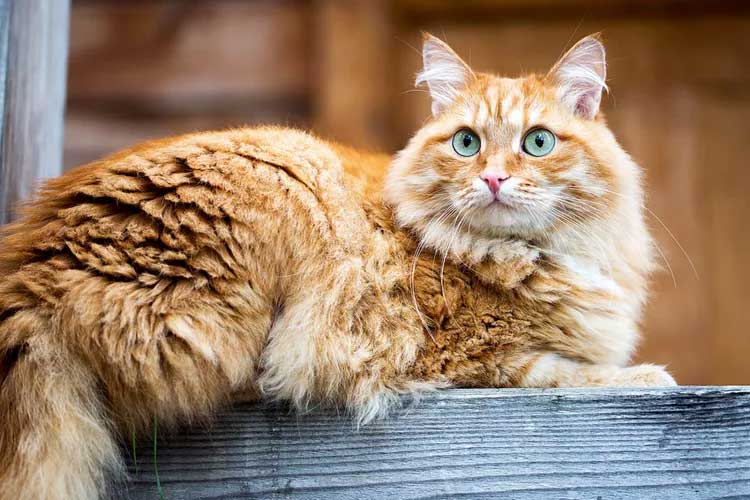
History
To say the Siberian breed has endured the test of time is an understatement. The earliest recorded history of these native Russian forest cats dates back to the 13th century, according to the SCC. Some cat experts speculate that the Siberian may even be the distant ancestor of all long-haired breeds we know today.Over the centuries, these wild, long-haired cats became domesticated, turning to human homes for refuge from the unforgiving Siberian winters. People gladly welcomed these loving cats for their sharp mousing abilities and sweet temperament.
Siberian cats were first mentioned in European culture in early 19th-century cat shows. The breed wasn't imported into the U.S. until the 1990s, and the cats remain relatively rare today.
Fun Facts
The Siberian cat is the national cat of Russia.Five Siberian cats were used to play Mr. Fuzzypants, one of the main characters of the 2016 film Nine Lives.